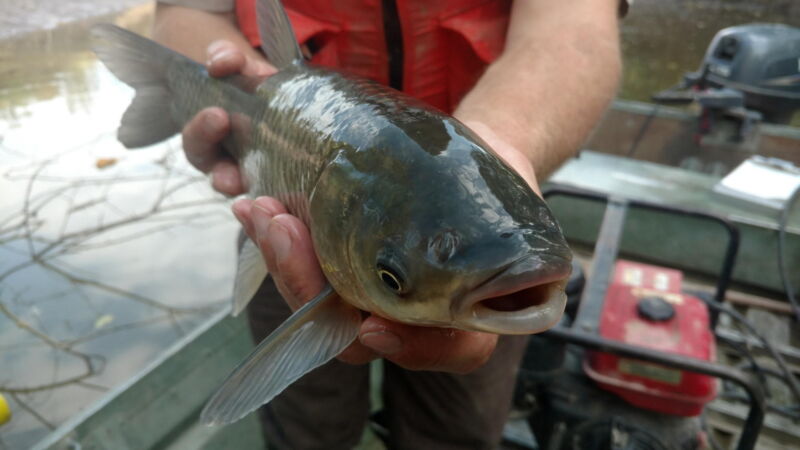Inside the battle to build a $1.2 billion fish barricade

Enlarge / Top: An invasive carp collected during scheduled fish sampling at the Wilmington Substation. (credit: USFWS)
Over the past 50-some years, invasive carp, a stunningly destructive invasive species, have infested almost every waterway in the Midwest, from South Dakota to beyond the Mississippi Delta, and have even reached West Virginia. In some waters, it has been reported that around 90 percent of the fish are invasive carp; in one section of the Illinois River, a Mississippi tributary, they make up more than 75 percent of the total biomass in the water. They are obnoxious invaders, overwhelming other fish species, muddying clear waters, and-in some cases-jumping out of the water when startled. A passing boat can throw hundreds of fish into a frenzy, creating an airborne blizzard of 25-pound lunkers that have broken the arms and jaws of recreational boaters.
So far, however, the prolific fish have mostly stopped short of the Great Lakes, blocked by the subtle ridge of a continental divide that circles the lakes' southern and western shores. Water to the west and south of the ridge flows to the Mississippi River and the Gulf of Mexico. Water to the east and north flows to the Great Lakes, which contain about 20 percent of the world's surface fresh water and attract boating, fishing, and other recreation, which all together have been estimated to generate between $14 billion and $42 billion a year.
But the fish, formerly called Asian carp, could still find a way in. There is a single year-round connection between those two main watersheds of eastern North America: the Chicago Sanitary and Ship Canal.